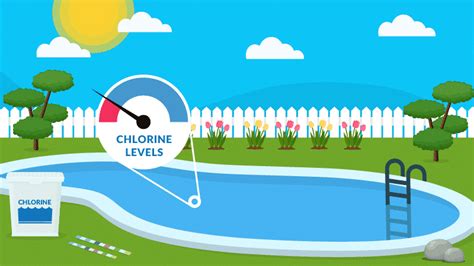The Complete Guide to Pool Chlorine Management
Maintaining a sparkling clean and safe swimming pool requires diligent attention to chlorine levels. Chlorine is the workhorse of pool sanitation, effectively eliminating bacteria, algae, and other contaminants that can compromise water quality and pose health risks. This comprehensive guide will equip you with the knowledge and techniques for effective pool chlorine management.
Understanding Chlorine's Role in Pool Sanitation
Chlorine, in its various forms (calcium hypochlorite, sodium hypochlorite, dichlor, trichlor), acts as a powerful disinfectant. It works by oxidizing contaminants, breaking them down and rendering them harmless. The effectiveness of chlorine depends on several factors, including its concentration, pH levels, and water temperature. Maintaining the right balance is crucial for a healthy and enjoyable swimming experience.
What are the different types of chlorine used for pools?
Several chlorine types exist, each with its advantages and disadvantages:
-
Calcium Hypochlorite (Cal Hypo): A granular form, often sold as "shock," it provides a quick boost to chlorine levels. It also raises calcium hardness, which can be beneficial or detrimental depending on your pool's existing levels.
-
Sodium Hypochlorite (Liquid Chlorine): The most common type, readily available and relatively inexpensive. It's easy to use but has a shorter shelf life than granular options.
-
Dichlor: A granular form that dissolves more slowly than cal hypo, providing a more sustained release of chlorine. It also lowers pH.
-
Trichlor: A slow-dissolving granular or tablet form, ideal for chlorinators. It lowers pH significantly.
Testing Your Pool Water: The Foundation of Chlorine Management
Regular water testing is non-negotiable for proper chlorine management. You need to test for:
-
Free Chlorine (FC): The active form of chlorine that works to disinfect your pool. The ideal range is 1-3 ppm (parts per million).
-
Combined Chlorine (CC): Chlorine that has combined with contaminants, forming chloramines. High levels of CC indicate a need for shocking. Ideally, CC should be near zero.
-
pH: The measure of acidity or alkalinity of your pool water. The ideal range is 7.2-7.8. Improper pH levels can significantly impact chlorine effectiveness. A low pH enhances chlorine's disinfecting power, while a high pH reduces it.
-
Total Alkalinity (TA): TA acts as a buffer, preventing rapid pH fluctuations. The ideal range is 80-120 ppm.
-
Calcium Hardness: Measures the amount of calcium in your water. Too low, and you risk etching your pool surface; too high, and you risk scaling.
How often should I test my pool water?
Ideally, test your pool water at least twice a week, more frequently during periods of heavy use or hot weather. Using a test strip is convenient for quick checks, while a liquid test kit provides more precise results.
Maintaining Proper Chlorine Levels: A Step-by-Step Guide
-
Test your water: Begin by testing your water to determine current chlorine, pH, and other critical levels.
-
Adjust pH first: If your pH is outside the ideal range, adjust it before adding chlorine. Using pH up or pH down solutions, gradually adjust to the recommended 7.2-7.8 range.
-
Add Chlorine: Add the appropriate amount of chlorine to reach the desired free chlorine level (1-3 ppm). Always follow the instructions on your chosen chlorine product.
-
Shock your pool periodically: Shocking your pool involves adding a large amount of chlorine to quickly eliminate contaminants and chloramines. This is typically necessary after heavy use or when you notice cloudy water or a strong chlorine smell (chloramines).
-
Regular Maintenance: Regular brushing, vacuuming, and skimming help remove debris and prevent the build-up of contaminants, reducing the chlorine demand.
-
Circulation: Ensure your pool pump runs for at least 8-12 hours per day to circulate the water and distribute chlorine evenly.
Troubleshooting Common Chlorine Issues
My pool water is cloudy even with chlorine.
Cloudy water despite adequate chlorine suggests a problem beyond just disinfection. This might indicate a need to shock the pool, adjust pH, or filter problems. Ensure you clean your filter regularly.
My chlorine levels keep dropping.
Rapid chlorine depletion might point to excessive organic matter (sun-tan lotion, leaves, etc.), high levels of combined chlorine (requiring a shock treatment), or a problem with your pool's filtration system.
My pool water has a strong chlorine smell (chloramines).
A strong chlorine odor, rather than a fresh smell, indicates the presence of chloramines – a byproduct of chlorine reacting with contaminants. Shocking your pool is crucial to eliminate them.
Safety Precautions when Handling Chlorine
Always handle chlorine products with care. Wear appropriate protective gear, including gloves and eye protection. Avoid inhaling chlorine fumes. Store chlorine products in a cool, dry place, away from children and pets. Never mix different chlorine products.
This comprehensive guide provides a solid foundation for effective pool chlorine management. Remember, regular testing and maintenance are key to ensuring a safe, clean, and enjoyable swimming experience. If you're experiencing persistent issues, it's always best to consult a pool professional.

